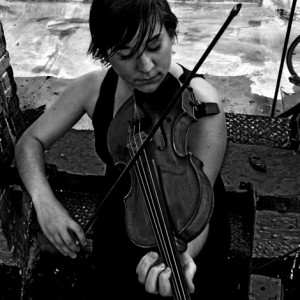“I always describe the viola as something that is kind of the wrong size for its body. It sounds like a man singing very high or a woman singing very low. And there’s something about that in-between-ness that is very attractive to me and the challenge of overcoming the fact that, physics-wise, it’s actually proportioned incorrectly, in other words, for a viola to be the right size for the length of its strings to play very easily, it would be something like the size of a small cello…There’s something about reaching in and having to get around that imperfection that really appeals to me, honestly.” (more…)

Spectrum Concerts Berlin visits New York
Last week, I met with cellist Frank Dodge at Lincoln Center to discuss the upcoming concert his ensemble Spectrum Concerts Berlin is giving in New York.
At 8 PM on December 7th at Weill Recital Hall, Dodge and his colleagues, in collaboration with the Abby Whiteside Foundation, will present a program that celebrates the works of composer/pianist Robert Helps (1928-2001).
Helps was a virtuoso performer adept at both contemporary repertoire and warhorses from the classical music canon. He also relished championing works that had been overlooked and crafting (often fiendishly challenging) transcriptions for the piano. More than once, I heard Milton Babbitt suggest that Helps “made the unplayable playable.”
Born in the United States, Dodge relocated to Berlin in the 1980s. But he didn’t forget about his first encounters with Helps: in the late 1960s in Boston as a student at the New England Conservatory of Music.
He says, “Bob (Helps) liked to champion pieces that needed looking after. His performances of the music of John Ireland, Felix Mendelssohn, and Poulenc and, of course, his own music were truly very special to hear. We were fortunate to have him visit and perform with us in Berlin twice. I only wish that, before his passing in 2001, we could have collaborated more frequently.”

Dodge’s stewardship has cultivated a group of champions of underrepresented repertoire. Spectrum Concerts Berlin is currently giving its twenty-fourth season of concerts. They have recently released their second recording devoted to Helps’ music: Robert Helps in Berlin (also featuring the ATOS Trio and Helps; Naxos 8.559696-97). A double CD set, it features a number of Helps’s important chamber works, including one of his first mature pieces, the 1957 Piano Trio, as well as one of his last, Piano Trio No. 2, written shortly before his passing. It’s interesting to note his return to the genre after forty years’ absence. My initial impression of the piece is one of leave-taking. I hear its angular lines, brittle articulation, and acerbic harmonies as a defiant kind of valedictory statement. Dodge, on the hand hears the trio showing evidence of new potential directions in Helps’s music; alas, unrealized.
He says, “The second Piano Trio and some of the other late pieces, such as Shall We Dance (1994) and the Piano Quartet and Quintet (both 1997), provide glimpses of Bob considering his compositional approach afresh. I find the discoveries he makes in these works to provide some of his most exciting music.”
The CD also includes a live recording of Helps at the piano; performing a recital that includes some of his aforementioned favorites: Mendelssohn, Ireland, Poulenc, Shall We Dance, and Godowsky’s Studies on Chopin’s Etudes (or, as one of my professors used to like to call them, Chopin on steroids!). One is struck by his exquisite touch and seemingly effortless virtuosity of Helps’ playing.
The impressive array of compositions and music-making displayed on the Naxos disc raises a question. Why isn’t Helps a household name here? Why don’t American-based ensembles perform more Helps and why don’t more composers know him as an important figure?
When I pose this question to Dodge, he says, “Bob did zero self-promotion: none. Even though he taught all over and was very well respected, he had a difficult time with the conventional ‘career building’ activities that many musicians take for granted as part of the business. And he also had considerable personal struggles during his lifetime, with illnesses and other challenges. There were long periods of silence, where he didn’t play or compose at all. Fortunately, these gave way to great bursts of creativity.”
“So, Helps isn’t a household name … yet! Things will change. Sometimes, when a figure is hyped during his or her lifetime, but their work is nothing special, they fade away rather quickly. With Helps, the opposite can be true. It is durable work, and its legacy will only grow. The strength of his music is what will bring performers and listeners to it over time.”
My take: if you’re in the New York area, don’t miss out on this chance to hear Spectrum Concerts Berlin on 12/7. They will make you a convert to Helps’s music in nothing flat.
Ticket Giveaway
In a very generous gesture, the ensemble is offering 20 FREE tickets to S21 readers. If you’re interested in attending the show, email Paula Mlyn at: paula@a440arts.com with your name. She will put aside a ticket for you for the December 7 performance.
S21’s intrepid reporter-in-the-field (oh yeah, and superstar violinist, too!) Hilary Hahn just happened to virtually bump into the dean of (very young) American composers, Nico Muhly. …Well, maybe there was a little advanced planning, but let’s keep this casual, shall we? Here they muck-de-muck for a friendly quarter-hour, about the musical life and the pieces Nico’s composed for Hilary.
[youtube]http://www.youtube.com/watch?v=1IBk_U6b2Hw[/youtube]
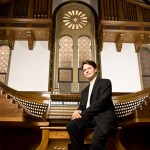
John Clare spoke to Paul about the program, teaching organists new music plus composers about the organ, and some new works by Mason Bates and Michael Daugherty: mp3 file
An extraordinarily expressive performer and an intensely intelligent musician, Grammy Award-winning organist Paul Jacobs is helping the King of Instruments retake its rightful place in classical music. He is known for his marathon performances, which sometimes last up to 18 hours, of the complete works of J.S. Bach, Messiaen, and other composers, as well as his presentations of new works and core repertoire. Jacobs was invited to join the faculty of the Juilliard School in 2003, and was named chairman of the organ department in 2004, one of the youngest faculty appointees in the school’s history. He received Juilliard’s prestigious William Schuman Scholar’s Chair in 2007. Jacobs has played with numerous orchestras around the country, including the Chicago Symphony Orchestra and the Philadelphia Orchestra. Jacobs’ most recent album is a recording of Copland’s Organ Symphony with the San Francisco Symphony under the baton of Michael Tilson Thomas.
“Sacred Music in a Sacred Space” at the Church of St. Ignatius Loyola in New York City is committed to presenting the finest sacred choral and organ repertoire spanning over 1,000 years of music history. Known for their artistic excellence, the renowned Choir and Orchestra of St. Ignatius Loyola present exhilarating performances of large-scale choral masterpieces as well as more intimate and reflective settings by lesser-known composers. Internationally-acclaimed organists may also frequently be heard on the Church’s magnificent N.P. Mander Pipe Organ, the largest tracker organ in New York City. General admission is $20, with tickets for students and seniors at $15.
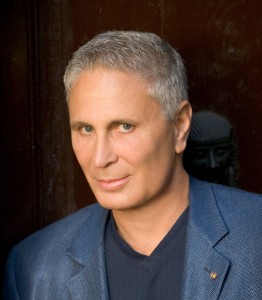
The lyrics Corigliano chose for this song cycle, including Mr. Tambourine Man, Blowin’ in the Wind, Masters of War, All Along the Watchtower and Forever Young, are as timely today as they were when Dylan originally wrote them in the 60’s. “I felt the most important thing Bob Dylan did in the 60’s was raise political awareness of the situations around his time,” says Corigliano. “His time is not that dissimilar to our time.”
In an exclusive interview with Musiqa’s Chris Becker, Corigliano discusses the poetry of Bob Dylan, the challenges of composing for the voice, and the current state of music education.
Chris Becker: Have you had listeners come up to you, say people in their 20’s or students, and ask you about Bob Dylan? Do younger audiences know who Bob Dylan is?
John Corigliano: I think everybody knows who Bob Dylan is, 20 year olds too. Last season he was playing on the Grammys and he’s got new stuff coming out all the time. He’s an active artist as well as one who existed in the 60’s.
Chris Becker: Have you heard anything from Dylan himself about the piece?
John Corigliano: No, not a word. I sent him the CD when it came out, the orchestral vocal performance on Naxos. But I didn’t expect to hear anything for several reasons. He’s such a superstar this would probably be insignificant to him. I think he thinks that classical music is elitist music so he might not respond well and certainly he would probably have a response (like): “He’s setting it all wrong! That’s not the way it goes!”
Chris Becker: I wonder about that. I think it would be very intriguing to get a reaction from him at some point. I asked the first question I guess in part because I’d read that when you grew up when Dylan was first making the rounds…you weren’t really listening to his music? You were listening to other kinds of music.
John Corigliano: That’s correct. I wasn’t interested in folk music that basically dealt three or four chords and a melody that stayed the same verse after verse no matter what the words said. I was much more interested in more innovative things like what the Beatles were doing. If was at a coffee house and I heard Bob Dylan, I’d keep talking to my friend in the coffee house and I wouldn’t say: “What’s that?” It wouldn’t have drawn me. I think his words are magnificent, but when I finally did hear the music, I didn’t think it fit the words sometimes because that’s not how folk music goes. It has a single verse even if the mood and the whole tenor of the words change. When I heard the Beatles on the other hand, the orchestrations they do, the harmonies they do, the phrasing – it’s all very unusual stuff. I was much more drawn to that.
Read the entire interview here.
Special thanks to Jeremy Howard Beck for his help with coordinating this interview
Musiqa Presents: Play a Song For Me, September 24, 2011, 7:30 p.m. at the Hobby Center for the Performing Arts, Zilkha Hall, 800 Bagby, Houston TX 77002. Individual tickets: $40, $30 and $20. 50% off for students and seniors with ID. Individual tickets and subscriptions are available at the Hobby Center website.
Songs for Persephone: Mimi Goese & Ben Neill

Take a seductive voiced art-pop singer and a post-jazz/alt-classical trumpeter. Add fragments of nineteenth century classical melodies, electronics elicited by a “mutantrumpet” controller. Then add influences ranging from ancient Greek mythology to the Hudson River Valley. What you have are the intricate yet intimate sounds on an evocatively beautiful new CD: Songs for Persephone.
The Persephone legend is one of the oldest in Greek mythology, with many variants that provide twists and turns to the narrative and subtext of the story. In the myth, Persephone, daughter of Zeus and the harvest goddess Demeter, is kidnapped by Hades, god of the underworld. During her absence, vegetation is unable to grow in the world; fields fall fallow and crops cannot be harvested.
To break this horrible time of famine, the gods come to an understanding with Hades. Persephone is eventually freed, but on the condition that, if she has eaten anything while in Hades’ realm, she must return to his kingdom for a certain length of time. Thus, each year she must remain in the underworld one month for each pomegranate seed that she has consumed. This serves to rationalize, in mythic terms, the change of seasons, times of decay and renewal, shifts in light and weather; even the autumn foliage and the falling of the leaves.
Vocalist Mimi Goese and trumpeter Ben Neill have updated the Persephone story, while retaining its iconic essence, on their new recording Songs for Persephone (out now on Ramseur Records). As one can see from the pomegranate on the cover, (a visual designed by Goese), the duo is mindful of the legendary Persephone’s history; but they are not hung up on providing a linear narrative.
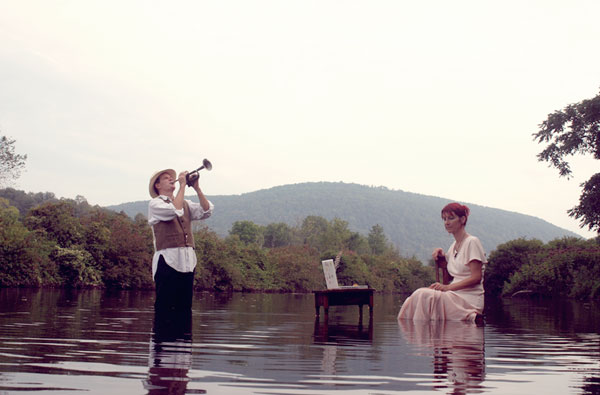
In a recent phone conversation, Goese, who wrote the album’s lyrics, said, “The artwork that I did for the cover, featuring the pomegranate, is one acknowledgement of the myth of Persephone. And there are other images that I found in the lyrics. But we were interested in using what was evocative about Persephone to create our own story. That’s sort of how the myth evolved too – one storyteller picks up the thread from another down through the years.”
They started work on this music some five years ago, but originally presented it as part of a theatrical production by the multimedia company Ridge Theater, starring Julia Stiles. In 2010, it was produced at Brooklyn Academy of Music as part of the Next Wave Festival.
The theatrical presentation and the mythological story behind it are only two strands in a disparate web of influences that resonate with Songs for Persephone. Both Goese and Neill make their home in the Hudson River Valley. Both for its stunning natural surroundings and its history as a home for artists of all sorts, the valley is rich with reference points. Neill feels that these are subtly imparted to the music.
In a recent phone conversation, he said, “I found myself particularly interested in the Hudson River School of painters. These Nineteenth Century artists depicted the local landscape and the changing of season with a dimensionality and symbolism that seemed to have an affinity with what Mimi and I were after in Songs for Persephone.”
For Neill and Goese, these extra-musical influences – artwork, nature, and theater – are an important part of the music’s genesis. But the polystylistic nature of their music making adds still another layer to the proceedings.
Goese says, “I started in dance and theater and later moved to performance art. Singing came along later. But I don’t have the musical background or training that Ben has – I’m self taught.”
[youtube]http://www.youtube.com/watch?v=oG1XgKytxd0[/youtube]
She doth protest too much. Goese’s voice provided the steely, dramatic center to the work of late eighties band Hugo Largo. One part art rock and another dream pop, the group incorporated bold theatricality and ethereal experimentation, releasing two memorable full lengths, Arms Akimbo and Mettle, and the Drums EP, an alt-pop connoisseur’s delight. She’s also collaborated on several occasions with Moby and, under the moniker Mimi (no last name) released Soak, a solo album on David Bryne’s Luaka Bop label.
Goese is a powerful singer, but Songs of Persephone brings out the lyricism her voice also possesses. Cooing high notes and supple overdubbed harmonies are juxtaposed with the more muscular turns of phrase. Experience plays a role in Goese’s tremendous performances on the disc. But she also credits the musical creations of her collaborator Neill with spurring on her inspiration.
“Ben has been a terrific person with whom to work,” Goese says. “He’s inventive and willing to try new things. From the moment we first performed together, at a concert nearly a decade ago, I’ve felt an artistic kinship with him.”
One can readily hear why Neill’s music would be an engaging foil for Goese. His background as a producer, and his years of work designing the mutantrumpet, have encouraged Neill’s ear toward imaginative soundscapes. His 2009 album Night Science (Thirsty Ear) is an example of Neill’s nu-jazz arrangements and soloing at their very best.
On the current CD, Neill’s playing remains impressive; but his arranging and collaborative skills come to the fore. There are intricate textures to found, on which Neill’s trumpet and electronics are abetted by strings, bass, and drums, but it’s the melodies, floating memorably past, one after the other, that are most impressive here. Some of the melodic lines he crafts are imitative of the voice in their own right: it’s no accident that some of the most inspired music-making on Songs for Persephone are when Goese and Neill create duets out of intricately intertwined single lines.
Neill says, “The classical materials that I used as the basis of the compositions on Songs for Persephone were melodies from the Nineteenth century: from opera and symphonic music. Many of them were from relatively the same era in which the Hudson Valley painters worked. I found it fascinating to juxtapose these two genres that were in operation more or less at the same time.”
He continues, “I’d describe the material as fragments of melodies: small excerpts rather than recognizable themes. None of them are treated in such a way that most listeners will be able to say, ‘Hey that’s Berlioz,’ or ‘That sounds like Schumann.’ They were meant to be a starting point from which I would develop the music: it’s not a pastiche.”
At 7:30 PM on September 27th, Goese and Neill will be having an album release party at the Cooper Square Hotel, part of Joe’s Pub’s Summer Salon series. Goese says, “It’s an interesting space – we’ll have glass windows behind us, which is unusual as compared with a more conventional stage. But it’s fun performing in non-standard venues. It allows you to try different things and to bring different elements into the mix in terms of theatricality, lighting, and the way that you play off of each other. I’m excited to see how Persephone changes as we take it into various performing spaces.”
-Composer Christian Carey is Senior Editor at Sequenza 21 and a regular contributor to Signal to Noise and Musical America. He teaches music in the Department of Fine Arts at Rider University (Lawrenceville, New Jersey).

We all know Hilary Hahn as Sequenza 21’s resident video blogger; oh, and she’s a world class violinist and DG recording artist.
[youtube]http://www.youtube.com/watch?v=G_-fpVZ0hdw[/youtube]
Wearing both of those hats simultaneously, Hilary had a video chat via Skype with composer Max Richter earlier this week. Richter is one of 27 composers commissioned to write an encore for Hahn; she begins debuting the pieces this coming October. In order to spotlight the featured composers, Hilary’s planning to release a video interview with one each month. It makes us here at Sequenza 21 feel kind of special. After all, how many other websites have their video blogger booked two years out?
Andrew Ford’s “Illegal Harmonies”

“I’ve never had a grand plan. Never even had an ambition – I still don’t, beyond wanting to write better music,” says Ford. “So I’ve done things as they’ve come along. Of course I also say no to things. I got into writing music journalism because, in 1983 when I came to Australia, I wasn’t, over all, very impressed with the music journalism I read. My radio work really came out of being an academic and gradually replaced it totally.”
Although born in England, Andrew Ford has become associated with his adopted homeland, Australia. He’s one of the most astute commentators on the country’s music scene, hosting “The Music Show,” a weekly broadcast on ABC Radio National since 1995.
“I live in the country, and most weeks I compose from Monday to Thursday. Then on Friday I drive the two hours up to Sydney and my producers hand me a folder full of research and a bunch of CDs relating to the guests I will have on The Music Show the following morning. There are usually four and we try to mix things up: I might talk to a jazz singer, a didgeridoo player, an opera director and the composer of a new string quartet. I do the show live, and then drive home on the Saturday afternoon. I try not to work on Sundays. If I’m writing a book, of course, that might have to take over for a while.”
Ford has written several books, and while most are accessible to a general audience, he’s never shy about exposing his readers to a wide array of adventurous music. He’s also the rare interviewer who’s able to “talk shop” with composers from the vantage point of a fellow practitioner. This is clearly demonstrated in Composer to Composer (1993), an excellent collection of interviews he conducted with many of Australia’s finest composers, as well as composers from elsewhere, such as the UK’s Brian Ferneyhough and Americans John Cage and Elliott Carter. Another one of his collections, Illegal Harmonies, has just been reissued in its third edition by Black, Inc.
Ford says, “Illegal Harmonies was a history of music in the 20th century and began as a radio series in 1997. There were ten 90-minute episodes, one for each decade. The book was published the same year, and this is its third edition. I’ve added a new preface and also there’s a new epilogue looking at music in the first decade of the 21st century.”
Black, Inc. has also recently published Ford’s latest book, The Sound of Pictures. He says, “Funnily enough, the book isn’t really about film scores. I’d say that, more accurately, it’s about films and how they used music and sound in general. It looks – and especially listens – to a lot of films, and finds some connections between them. The way films use sound to plant clues – including false clues – or to undermine, as well as reinforce, what is happening on the screen.”
Those wishing for an entrée to Ford’s own music might start with The Waltz Book, a recent CD release on the Tall Poppies imprint. It consists of sixty one-minute long waltzes performed by pianist Ian Munro. But these are hardly your garden-variety Viennese dance pieces by Strauss. They explore a wide array of sound worlds, using waltz time as a jumping off point for some truly imaginative musical excursions.
Ford says, “The piece was never really about waltzes. It was an attempt to build a single large structure out of a lot of small structures. I felt these small pieces should all be the same size – like a mosaic – but that each might have its own personality and be performable as an independent miniature. A minute seemed the obvious length for each piece, and having decided that, the idea of the minute-waltz followed. Of course, the fact that each minute is a waltz – or at least waltz-related – brings a kind of unity to the hour-long whole, but what interested me above all was two things. First, I wanted to experiment with putting different amounts of music into the minute molds: you can have a minute of furious activity, or a minute of Satie-like blankness. Second, I wanted the overall structure of the hour to be coherent. That’s a long time listening to piano miniatures, and the audience needs to have its attention held: there had to be a sense of a journey or a story being told. You can imagine that at the first performance I was quite nervous!”
Another of Ford’s most recent pieces found the composer working in another medium with a storied tradition: the brass band. The Black Dyke Band premiered his work The Rising at the Manchester Brass festival in January 2011.
Ford says, “Without wishing to make a pun, writing for a brass band was a blast, and especially writing for the Black Dyke Band which is the UK’s finest and has more than 150 years of history behind it. They can play anything – they are total virtuosi. I’d never written for band before. I wasn’t even terribly sure what a baritone horn was. I did my homework, but I confess there was an element of guesswork involved. But the piece came out well. It sounded just as I’d hoped. Better, in some ways, because one thing I’d failed to appreciate was just how homogenous the sound is – it’s like they are all playing different sizes of the same instrument. It was this big glowing mass of sound – the Berlin Philharmonic under Karajan – and I am completely hooked. I would love to write another band piece.”
Which other works would Andrew Ford like for listeners from outside Australia to hear? “I’m very happy with my Symphony (2008). I feel that, perhaps out of all my pieces, you could say this was really typical of me. There are no references, no extra-musical stuff: it’s just my music. And fortunately you can hear (and see) Brett Dean conducting the premiere of the piece at my website. I’ve revised it slightly since then, but nothing major. My opera, Rembrandt’s Wife (2009), is another piece I am very happy with. I had a brilliant libretto (by Sue Smith) and I tried to make it into one long song. I was determined it would be full of real singing from start to finish. It was a joy to write and I’ve never felt so unselfconscious in writing a piece. It felt as though it wrote itself. What else? Maybe Learning to Howl (2001), a song cycle for soprano, soprano sax/clarinets, harp and percussion, to words mostly by women.”
“One long-term project is called Progess. My earliest pieces – when I was a teenager – were rather influenced by Stockhausen’s then current intuitive music. This was convenient, in a way, because I must admit that I didn’t really know how to write everything down. As my technique improved, I have always wanted to return to that, to introduce more freedom into my pieces, but the trouble is I keep hearing them rather clearly in my imagination and I end up notating what I hear. Progress, right from the start, is designed as a fluid piece, with hardly anything pinned down and the players asked to improvise in various ways and based on certain melodic models. The instrumentation is totally flexible and so is the spatial layout. Indeed perhaps the most interesting thing about it is the way it will accommodate itself to the building in which it is performed – literally filling the building (not just the main performance space – even assuming there is one of these), so that it becomes a musical representation of the building. There will also be recorded voices – something I’ve used quite a lot recently – talking about the place, its history, its significance, what was there before it was built, etc. It should see the light of day next year with further performances in 2013, but it’s early in the process, so I can’t say too much more.”
When asked who, apart from Andrew Ford, are the composers born or residing in Australia that should gain more currency abroad, Ford replies, “David Lumsdaine, 80 this year and now living in the UK, is a very serious voice, I think. What interests me in particular is the way in which his soundscapes and his composed works intersect. There’s a new CD – White Dawn – that places them alongside each other. I’m very drawn to Mary Finsterer’s music, especially her latest stuff. It’s always interesting to observe composers in transition. Of course if you’re not in transition, then you’re drying up.”
Illegal Harmonies and The Sound of Pictures can be ordered via Black, Inc.’s website.
San Francisco Bay Area composer/performer Kanoko Nishi wraps up our series of interviews with composers who are premiering new works at the 10th Annual Outsound New Music Summit in San Francisco on Friday, July 22nd. The Friday night concert, entitled The Art of Composition, starts at 8 pm at the Community Music Center, 544 Capp Street, San Francisco. Tickets are available online from Brown Paper Tickets, and you can also buy them at the door. Listeners who don’t want to wait that long can get up close and personal with the composers, and learn about their creative process, at a free Monday night panel discussion at 7 pm on July 18th.
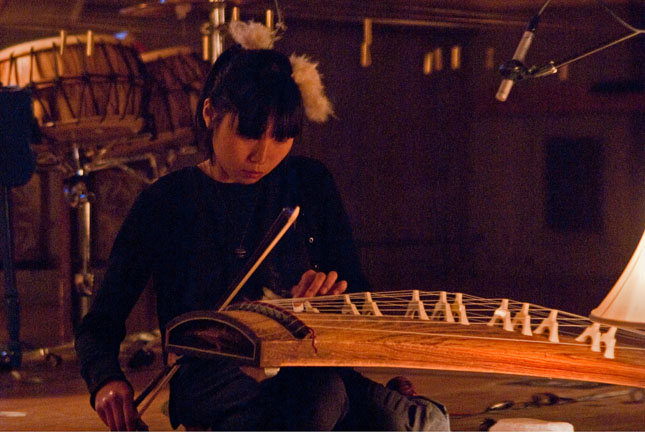 Kanoko is classically trained on piano and received a BA in music performance from Mills College in 2006. Her recent interest has primarily been in performing 20th century and contemporary music on piano and koto, and free improvisation in a variety of contexts. SF Bay Area contrabassist Tony Dryer and guitarist IOIOI, visiting from Italy, will perform Kanoko’s graphic scores as a duo.
Kanoko is classically trained on piano and received a BA in music performance from Mills College in 2006. Her recent interest has primarily been in performing 20th century and contemporary music on piano and koto, and free improvisation in a variety of contexts. SF Bay Area contrabassist Tony Dryer and guitarist IOIOI, visiting from Italy, will perform Kanoko’s graphic scores as a duo.
S21: How has your classical piano training prepared you – or not prepared you – for improvisation and composition?
I think that one very important element that is particular to musical improvisation as opposed to improvisation in other fields is the role of the musical instruments one performs and interacts with, and classical training for me was just a very deep way of building a relationship with my instruments. What has been helpful is not so much the technique, vocabulary or repertoire, but the time, energy and thoughts spent in the process of acquiring these more concrete skills and knowledge. For me, every improvisation I do is like a battle with the instrument I’m playing, in my case, either the piano or koto, and though I cannot really practice improvising by its definition, it’s only by practicing regularly that I feel I can enrich myself as a person, build my stamina and confidence enough to be a suitable match for my instrument to bring out its full potential. (more…)
Krys Bobrowski is up next in our series of interviews with composers who are premiering new works at the 10th Annual Outsound New Music Summit in San Francisco on Friday, July 22nd. The Friday night concert, entitled The Art of Composition, starts at 8 pm at the Community Music Center, 544 Capp Street, San Francisco. Tickets are available online from Brown Paper Tickets, and you can also buy them at the door. Listeners who don’t want to wait that long can get up close and personal with the composers, and learn about their creative process, at a free Monday night panel discussion at 7 pm on July 18th.
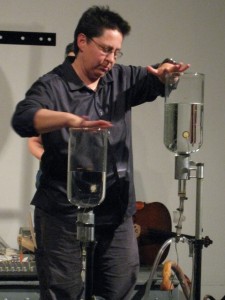 Krys is a sound artist, composer and musician living in Oakland, California. In addition to French horn she plays acoustic and electronic instruments of her own design. Her collection of original instruments includes prepared amplified rocking chairs, bull kelp horns, Leaf Speakers, Gliss Glass (pictured at left) and the Harmonic Slide. Krys received her M.F.A. in Electronic Music and Recording Media from Mills College and her B.A. in Computers and Music from Dartmouth College. In addition to performing her own work, Bobrowski plays with the Bay Area-based improvisation ensemble Vorticella.
Krys is a sound artist, composer and musician living in Oakland, California. In addition to French horn she plays acoustic and electronic instruments of her own design. Her collection of original instruments includes prepared amplified rocking chairs, bull kelp horns, Leaf Speakers, Gliss Glass (pictured at left) and the Harmonic Slide. Krys received her M.F.A. in Electronic Music and Recording Media from Mills College and her B.A. in Computers and Music from Dartmouth College. In addition to performing her own work, Bobrowski plays with the Bay Area-based improvisation ensemble Vorticella.
Her new work, Lift, Loft, Lull, is a series of short pieces exploring the sonic properties of metal pipes and plates and the use of balloons as resonators, performed by the composer and Gino Robair. The compositions have their origins in Bobrowski’s recent instrument prototyping work for the Exploratorium.
S21: Do your pipes, metal plates, and balloons come with any sound-generating history? Is there any “tradition” behind their use in music?
During my artist residency at the Exploratorium, I began experimenting with alternative resonators for musical instruments. I wanted to create an experience that would allow the listener to hear the ‘sonic bloom,’ the moment a resonator comes in tune and couples to a vibrating object.
As part of this project I started researching resonators in traditional and experimental instruments. I came across an interesting photo from the 1950s of someone playing an instrument made of glass rods attached to a series of inflated plastic cushions. The cushions were acting as the resonators for the glass. Later, I learned that the Baschet brothers, Francois and Bernard Baschet, invented this instrument along with dozens of other beautiful sound sculptures, including an inflatable guitar!
This started my exploration of using balloons as resonators, mostly for instruments made out of various kinds of metal: plates, pipes, bars, odd-shaped scraps. I also came across references to Tom Nunn’s and Prent Rodgers’ work with balloons and balloon resonators in a book by Bart Hopkin, ‘Musical Instrument Design.’ This led me to make a version of the ‘balloon gong’ instrument shown in the book.
The results of my sonic explorations and the ‘balloon gong’ will be featured in my composition, Lift Loft Lull. (more…)
